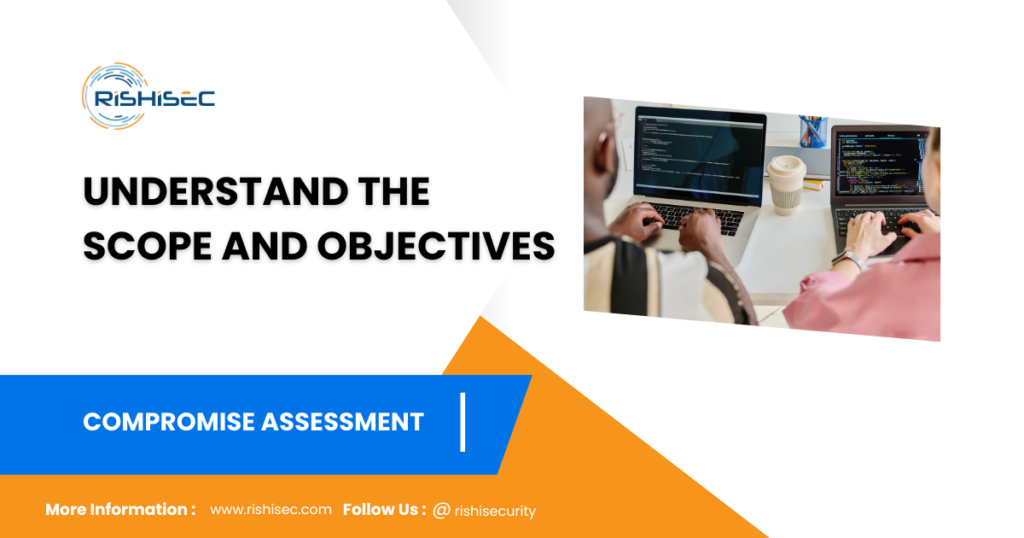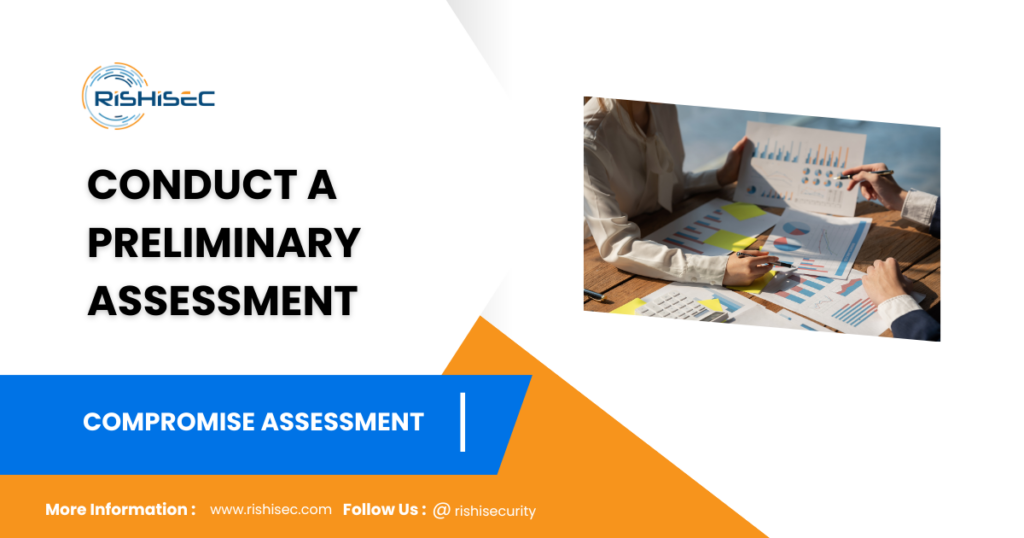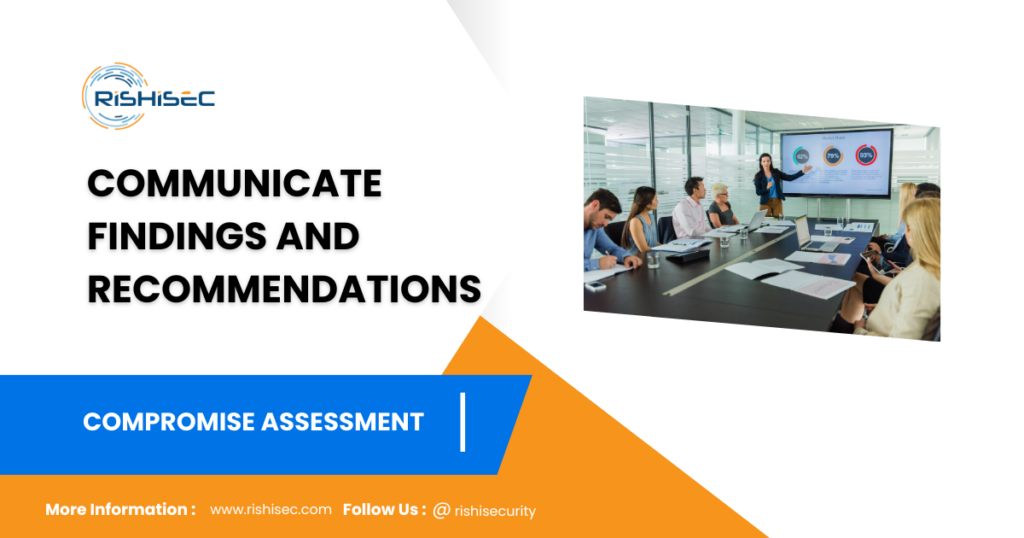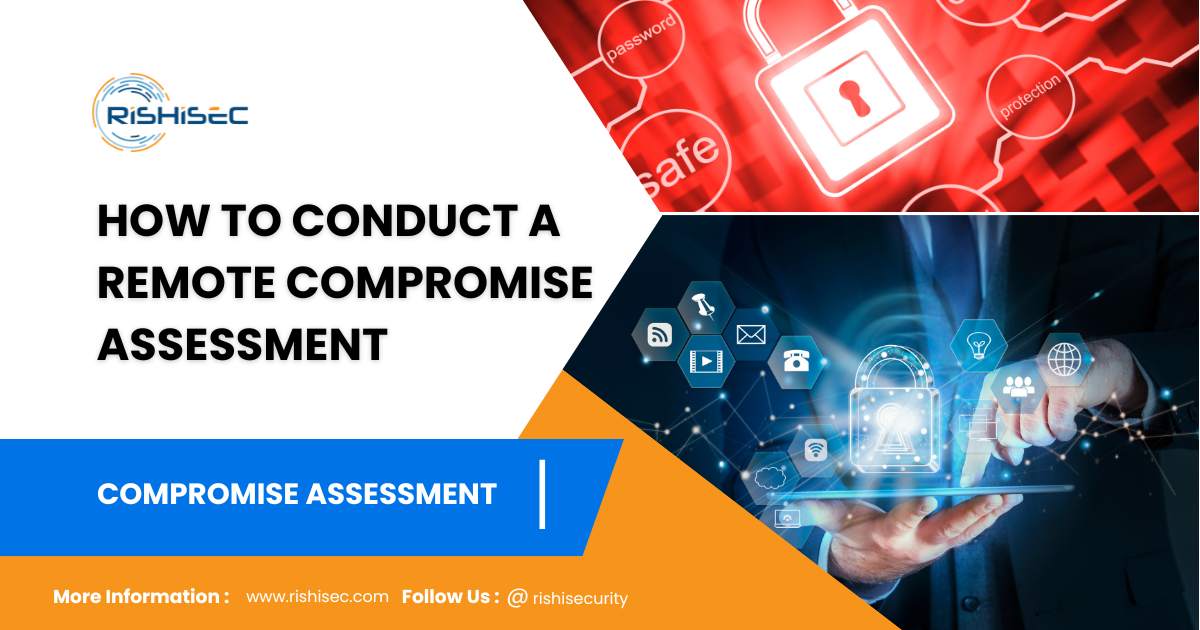Contents
- 1 Conducting a Remote Compromise Assessment
- 2 1. Understand the Scope and Objectives
- 3 2. Prepare Your Environment
- 4 3. Conduct a Preliminary Assessment
- 5 4. Perform a Detailed Analysis about Conducting a remote compromise assessment
- 6 5. Analyze Results and Prioritize Risks
- 7 6. Develop an Action Plan
- 8 7. Communicate Findings and Recommendations
- 9 8. Monitor and Reassess
Conducting a Remote Compromise Assessment
In an increasingly digital world, remote work and cloud solutions are becoming the norm, making remote compromise assessments more crucial than ever. Conducting a remote compromise assessment helps organizations identify and address security vulnerabilities without the need for on-site presence. This guide will walk you through the process of conducting a thorough remote compromise assessment, offering practical tips and strategies to ensure the effectiveness of your evaluation.
1. Understand the Scope and Objectives

Understand the Scope and Objectives
Before beginning a remote compromise assessment, it’s essential to define the scope and objectives. This involves:
- Identifying Key Assets: Determine which systems, applications, and data are most critical to your organization. This helps focus your assessment on high-value targets.
- Defining Assessment Goals: Clearly outline what you aim to achieve with the assessment. Common goals include identifying vulnerabilities, assessing the effectiveness of existing security measures, and understanding potential attack vectors.
2. Prepare Your Environment
Preparation is key to a successful remote assessment. Ensure you have:
- Access to Relevant Systems: Secure remote access to the systems and networks you’ll be assessing. This might include VPNs, remote desktop tools, or cloud-based management platforms.
- Up-to-Date Tools: Use the latest security tools and software for vulnerability scanning and threat analysis. Ensure these tools are configured correctly and up to date.
3. Conduct a Preliminary Assessment

Conduct a Preliminary Assessment
Start with a preliminary assessment to gather information and identify potential weaknesses. This involves:
- Network Scanning: Use network scanning tools to map out the network and identify active devices. Look for open ports and services that could be exploited.
- Vulnerability Scanning: Run vulnerability scans to detect known weaknesses in your systems. Prioritize vulnerabilities based on their potential impact.
4. Perform a Detailed Analysis about Conducting a remote compromise assessment
With preliminary data in hand, dive deeper into the analysis:
- Exploit Testing: Test for common exploits that could affect your systems. This includes testing for SQL injection, cross-site scripting (XSS), and other vulnerabilities.
- Review Security Configurations: Examine security configurations for firewalls, intrusion detection systems (IDS), and other protective measures. Ensure that they are properly configured and effective.
5. Analyze Results and Prioritize Risks
Once the analysis is complete, review the results and prioritize the risks:
- Risk Assessment: Assess the potential impact of each identified vulnerability. Consider factors such as the likelihood of exploitation and the potential damage.
- Prioritization: Rank vulnerabilities based on their severity and potential impact on the organization. Focus on addressing the highest risks first.
6. Develop an Action Plan
Create a comprehensive action plan based on your findings:
- Remediation Strategies: Outline strategies for addressing each identified vulnerability. This might include applying patches, reconfiguring security settings, or implementing new security controls.
- Timeline and Responsibilities: Set a timeline for implementing remediation measures and assign responsibilities to relevant team members.
7. Communicate Findings and Recommendations

Communicate Findings and Recommendations
Effective communication is critical in ensuring that your assessment leads to actionable improvements:
- Reporting: Prepare a detailed report outlining your findings, risk assessments, and recommended actions. Ensure the report is clear, concise, and accessible to all stakeholders.
- Presentation: Present the findings to key decision-makers and explain the implications of the identified risks and the steps needed to address them.
8. Monitor and Reassess
After implementing remediation measures, continue to monitor and reassess your systems. Conducting a remote compromise assessment ensures your environment remains secure by identifying any lingering vulnerabilities or new threats that may have emerged post-remediation. This proactive approach allows organizations to maintain a hardened security posture, giving them the confidence that their systems are not only patched but actively monitored against evolving risks.
- Ongoing Monitoring: Use monitoring tools to continuously track the security of your systems. Look for signs of new vulnerabilities or emerging threats.
- Periodic Reassessments: Regularly schedule remote compromise assessments to ensure that your security measures remain effective and up-to-date.
Conclusion about Conducting a remote compromise assessment
Conducting a remote compromise assessment is a crucial step in safeguarding your organization’s digital assets. By following these steps, you can effectively identify and address vulnerabilities, ensuring a robust security posture. Remember, a thorough and well-executed remote compromise assessment not only protects your systems but also strengthens your overall security strategy.
CTA
Ready to elevate your cyber security strategy? Start your free trial of SentryCA today and experience how our advanced solutions can help you stay ahead of threats. Discover how SentryCA can enhance your remote compromise assessments and protect your organization’s digital assets with ease. Sign Up for Your Free Trial.
Start reading our this post, How to Respond to a Compromise: Best Practices


